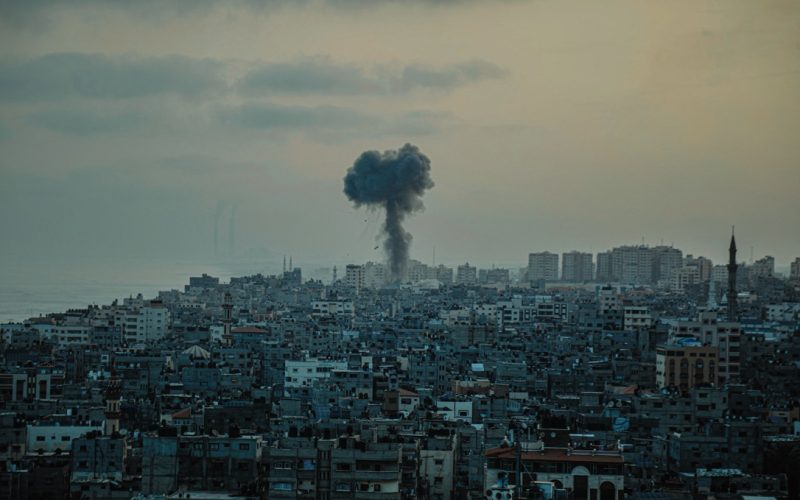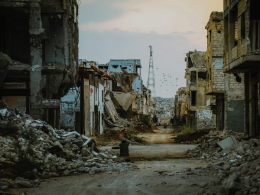Table of Contents Show
I. Historical Roots: National Aspirations and Competing Claims
The Israeli-Palestinian conflict is one of the most enduring and complex struggles of the modern era, marked by deep historical roots and competing national narratives. At its core, the conflict revolves around two groups, the Jewish and Palestinian peoples, each with profound historical and emotional connections to the land of historic Palestine, which includes present-day Israel and the Palestinian territories.
The roots of the conflict can be traced back to the late 19th and early 20th centuries when the rise of nationalism across Europe coincided with a growing Jewish movement known as Zionism. Zionism emerged as a response to widespread anti-Semitism, advocating for the establishment of a Jewish homeland in Palestine. At the same time, the Arab population of Palestine was developing its own national identity, fueled by the broader Arab nationalist movement that sought independence from Ottoman rule and later European colonial powers.
The Balfour Declaration of 1917, in which the British government expressed support for a “national home for the Jewish people” in Palestine, further exacerbated tensions. Following World War I and the collapse of the Ottoman Empire, Britain was granted a mandate over Palestine, and Jewish immigration to the region increased. This influx created a demographic shift that alarmed the Arab population, leading to increased tensions, violence, and protests against both British rule and Jewish settlement.
The culmination of these tensions occurred in 1947 when the United Nations proposed a partition plan to create separate Jewish and Arab states in Palestine. The Jewish leadership accepted the plan, which granted them a majority of the territory, while the Arab leadership rejected it, leading to violence and conflict. The declaration of the State of Israel in May 1948 sparked the first Arab-Israeli war, resulting in the displacement of hundreds of thousands of Palestinians, a tragedy referred to by Palestinians as the Nakba, or “catastrophe.”
The legacy of these historical events created deep-seated grievances on both sides. For Israelis, the establishment of their state represented a long-awaited return to their ancestral homeland and a refuge from centuries of persecution. For Palestinians, it marked the loss of their homeland, the uprooting of communities, and the beginning of a struggle for self-determination that continues to this day.
II. The Struggle for Statehood: War, Occupation, and Resistance
The Israeli-Palestinian conflict entered a new phase in the decades following the 1948 war, characterized by continued violence, military occupation, and the struggle for statehood. In 1967, the Six-Day War dramatically reshaped the geopolitical landscape of the region. Israel captured the West Bank, Gaza Strip, East Jerusalem, and the Golan Heights, significantly expanding its territory. This military victory further complicated the conflict, as Israel began to settle Jewish populations in the occupied territories, leading to ongoing tensions and resistance from the Palestinian population.
The Israeli occupation of the West Bank and Gaza Strip became a central issue in the conflict, fueling resentment and resistance among Palestinians. The Palestinian Liberation Organization (PLO), led by Yasser Arafat, emerged as the primary representative of the Palestinian people during this period. The PLO adopted a strategy of armed struggle against Israel, calling for the liberation of Palestinian territories and the establishment of an independent Palestinian state.
The late 1980s marked a turning point in the conflict with the eruption of the First Intifada, or “uprising.” This grassroots movement saw Palestinians in the occupied territories engage in nonviolent protests, civil disobedience, and, at times, violent resistance against the Israeli military. The Intifada drew international attention to the plight of the Palestinian people and highlighted the human cost of the occupation.
In response to the Intifada and changing geopolitical dynamics, the Oslo Accords were negotiated in the early 1990s. These agreements, facilitated by the United States, established a framework for peace and granted limited autonomy to the Palestinian Authority in parts of the West Bank and Gaza. While the accords generated hope for a resolution to the conflict, they also revealed deep divisions within Palestinian society and raised complex questions about borders, refugees, and the status of Jerusalem.
The failure to implement key provisions of the Oslo Accords and the subsequent violence of the Second Intifada in the early 2000s demonstrated the fragility of the peace process. Suicide bombings, military incursions, and escalated violence led to a profound sense of despair on both sides. The Israeli response to the Second Intifada included increased military operations and the construction of a separation barrier, often referred to as the “apartheid wall” by Palestinians, which further divided communities and deepened animosities.
III. Contemporary Challenges: Division and Disillusionment
As the 21st century progressed, the Israeli-Palestinian conflict faced numerous challenges that complicated prospects for peace. The political landscape shifted dramatically with the rise of Hamas, an Islamist militant group that emerged from the Palestinian resistance movement. Following Hamas’s electoral victory in 2006, the organization took control of the Gaza Strip, leading to a split in Palestinian governance between Hamas in Gaza and the Fatah-led Palestinian Authority in the West Bank. This division not only weakened the Palestinian negotiating position but also contributed to further violence, including repeated conflicts between Israel and Hamas.
The situation in Gaza has become particularly dire, marked by a blockade imposed by Israel and Egypt in response to Hamas’s actions. The blockade has resulted in severe humanitarian crises, with limited access to essential services, healthcare, and economic opportunities for the Palestinian population. The suffering of the people in Gaza has become a rallying point for international advocacy, yet attempts to address the humanitarian situation have often been overshadowed by political complexities and security concerns.
On the Israeli side, security concerns remain paramount. The ongoing threat of rocket attacks from Gaza, along with fears of terrorism, has shaped public sentiment and policy. Israeli governments have maintained a hardline stance on security, resulting in continued military operations, settlement expansion in the West Bank, and restrictive measures on Palestinian movement. These policies have fueled anger and resentment among Palestinians, leading to cycles of violence that seem intractable.
Efforts to revive peace negotiations have faltered, as the gap between Israeli and Palestinian positions remains wide. Key issues, including borders, the status of Jerusalem, the right of return for Palestinian refugees, and the future of settlements, remain unresolved. The absence of a viable peace process has contributed to a sense of disillusionment among both Israelis and Palestinians, with many questioning whether a two-state solution is still achievable.
International involvement in the conflict has also evolved. While the United States has historically played a significant role in mediating peace efforts, shifting political dynamics and domestic considerations have complicated its influence. Other nations and international organizations have sought to promote dialogue and peace, yet a comprehensive resolution remains elusive.
IV. The Path Forward: Hope Amidst Despair
Despite the challenges, the Israeli-Palestinian conflict continues to inspire hope for a peaceful resolution. Many grassroots initiatives and organizations work tirelessly to promote dialogue, understanding, and reconciliation between Israelis and Palestinians. These efforts focus on building relationships, fostering empathy, and promoting coexistence in a region often defined by division.
Moreover, the younger generation on both sides is increasingly vocal in advocating for peace and change. Palestinian youth are utilizing social media and activism to raise awareness of their plight and challenge the status quo. On the Israeli side, numerous organizations promote human rights and advocate for a more just and equitable approach to the conflict.
Internationally, there is a growing recognition of the need for a renewed commitment to peace. The tragic history of the Israeli-Palestinian conflict serves as a reminder of the human cost of inaction and the importance of standing up for justice and human rights. The international community has a role to play in advocating for a just resolution that respects the rights and aspirations of both peoples.
Ultimately, the path forward will require courage, empathy, and a willingness to confront difficult truths. It will necessitate acknowledging the narratives of both Israelis and Palestinians, understanding their pain, and striving for a future where both peoples can coexist peacefully. The Israeli-Palestinian conflict is a testament to the complexities of human identity, the struggle for self-determination, and the profound desire for peace and security.
As we reflect on this conflict, we must remember that the pursuit of justice and reconciliation is not merely an abstract ideal but a moral imperative. The lessons learned from the Israeli-Palestinian conflict remind us that the path to peace is often fraught with obstacles, yet it is a journey worth undertaking. Through dialogue, empathy, and a commitment to justice, a more hopeful future for both Israelis and Palestinians can emerge from the shadows of a troubled past.










